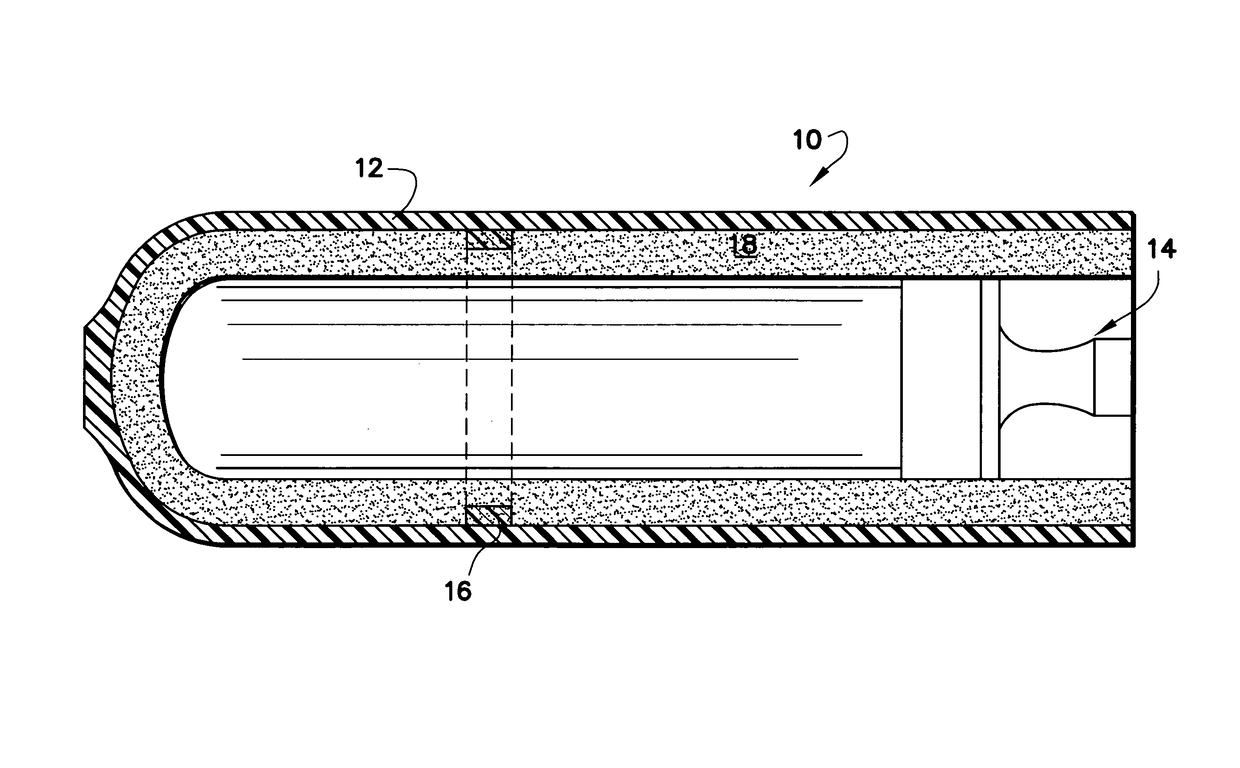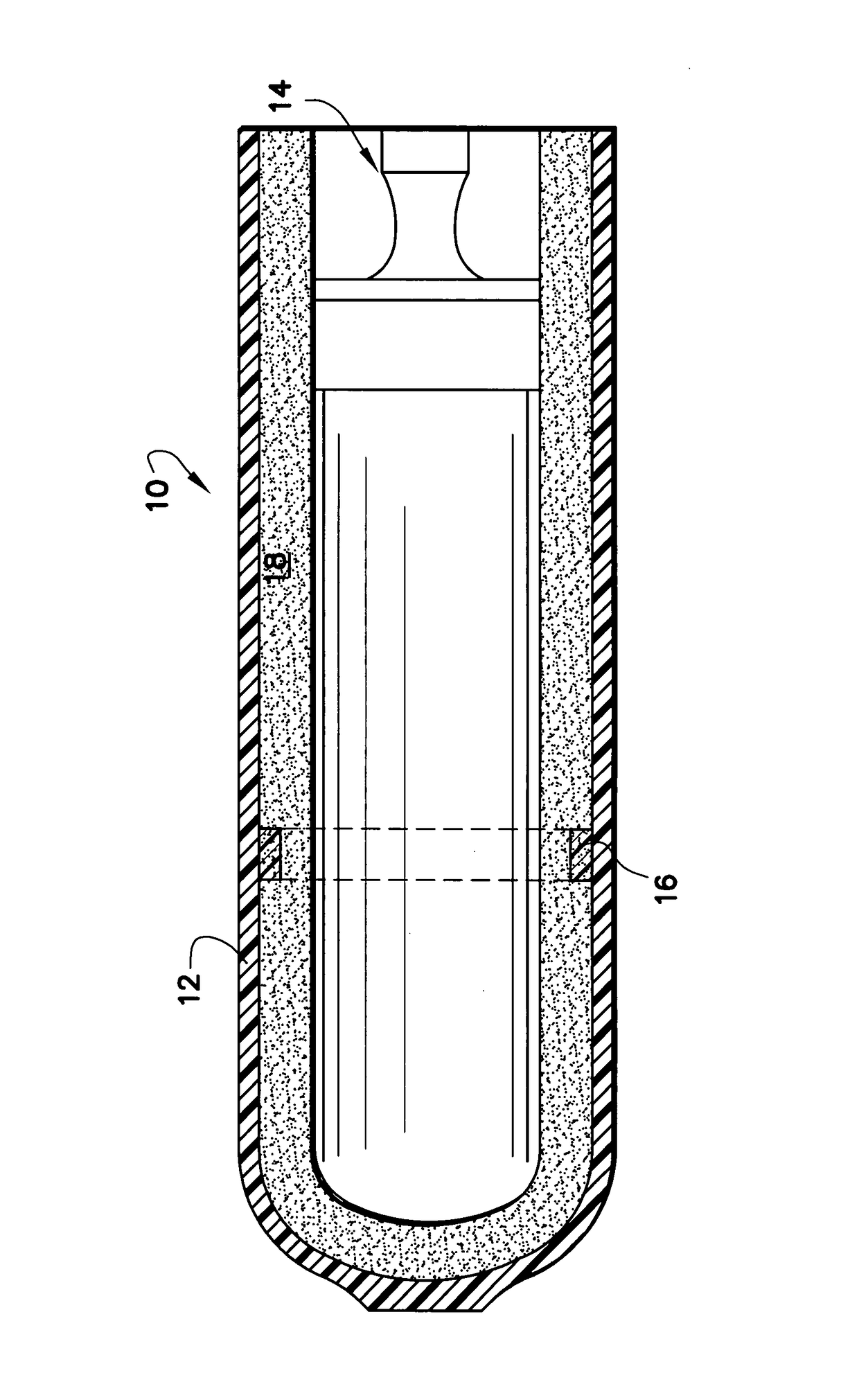Controlled autoignition propellant systems
a technology of propellant system and control, which is applied in the field of solid propellants to achieve the effect of dramatically reducing reaction violen
- Summary
- Abstract
- Description
- Claims
- Application Information
AI Technical Summary
Benefits of technology
Problems solved by technology
Method used
Image
Examples
example 2 (
Invention)
[0016]Example 1 was repeated except that a 1-inch wide×.0.1 inch thick mitigation strip of AFX-960 (HMX, nitroguanidine and HTPB) was placed between the motor case and the high-energy propellant. In the slow cook-off testing that ensued, the test item reacted at 35.7 hours after the test was begun and at a temperature of 297° F., yielding a burning-only type of reaction. The oven was opened and most of the metal test hardware was reusable. The case split into two major parts at the location of the mitigation strip.
example 3 (
Invention)
[0017]Example 2 was repeated except that GAP-960 (HMX, nitroguanidine and GAP binder) was employed for the mitigation strip. Identical results to those obtained in Example 2 were obtained.
PUM
 Login to View More
Login to View More Abstract
Description
Claims
Application Information
 Login to View More
Login to View More - R&D
- Intellectual Property
- Life Sciences
- Materials
- Tech Scout
- Unparalleled Data Quality
- Higher Quality Content
- 60% Fewer Hallucinations
Browse by: Latest US Patents, China's latest patents, Technical Efficacy Thesaurus, Application Domain, Technology Topic, Popular Technical Reports.
© 2025 PatSnap. All rights reserved.Legal|Privacy policy|Modern Slavery Act Transparency Statement|Sitemap|About US| Contact US: help@patsnap.com


